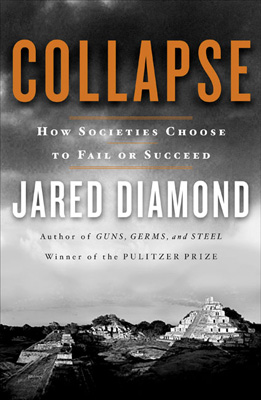 As we collect information on the farming practices of our Spring Grove ancestors, it helps to have a framework of a larger history to appreciate how our ancestors attempted to balance long term community stewardship interests with their short term financial interests. One book that I recommend as a starting position for discussion is Jared Diamond’s book Collapse. This is a very scholarly work, which identifies most of the key variables in resource sustainability or depletion that are important for us as a town to be aware of. He addresses the tragedy of the commons and other dynamics which tend to make people pessimistic about the future. Yet Diamond characterizes himself as a cautious optimist, because it is possible for us to resolve these issues IF we can think and act clearly and IF we can hold the forces responsible for environmental degradation accountable for their actions.
As we collect information on the farming practices of our Spring Grove ancestors, it helps to have a framework of a larger history to appreciate how our ancestors attempted to balance long term community stewardship interests with their short term financial interests. One book that I recommend as a starting position for discussion is Jared Diamond’s book Collapse. This is a very scholarly work, which identifies most of the key variables in resource sustainability or depletion that are important for us as a town to be aware of. He addresses the tragedy of the commons and other dynamics which tend to make people pessimistic about the future. Yet Diamond characterizes himself as a cautious optimist, because it is possible for us to resolve these issues IF we can think and act clearly and IF we can hold the forces responsible for environmental degradation accountable for their actions.
As a special bonus to those of us of Scandinavian extraction, Diamond has a chapter on the Viking colonies and the demise of Greenland’s Norse inhabitants. He attributes Greenland’s demise largely to Norse dogmatism and a taboo against making use of seafood. I personally don’t completely buy the argument that the Greenlanders failed to eat fish, which he makes based upon the inability of archaeologists to find fishbones in the ruins of Greenlanders’ homes. An alternative explanation for the lack of fish bones is simply that fish smell and coastal Scandinavians frequently gut and debone fish at the seashore. It seems to me that climate, disease, religious dogmatism, and resource depletion were all involved in Norse Greenland’s collapse, but the one thing that made Greenland truly different from the other Norse colonies that succeeded was the presence of Inuits. The inability of the Norse Greenlanders to maintain peaceful interactions with the growing number of Inuits was, in my opinion, a major factor in the apparent extinction of the Norse Greenlanders. I welcome alternative hypotheses.
